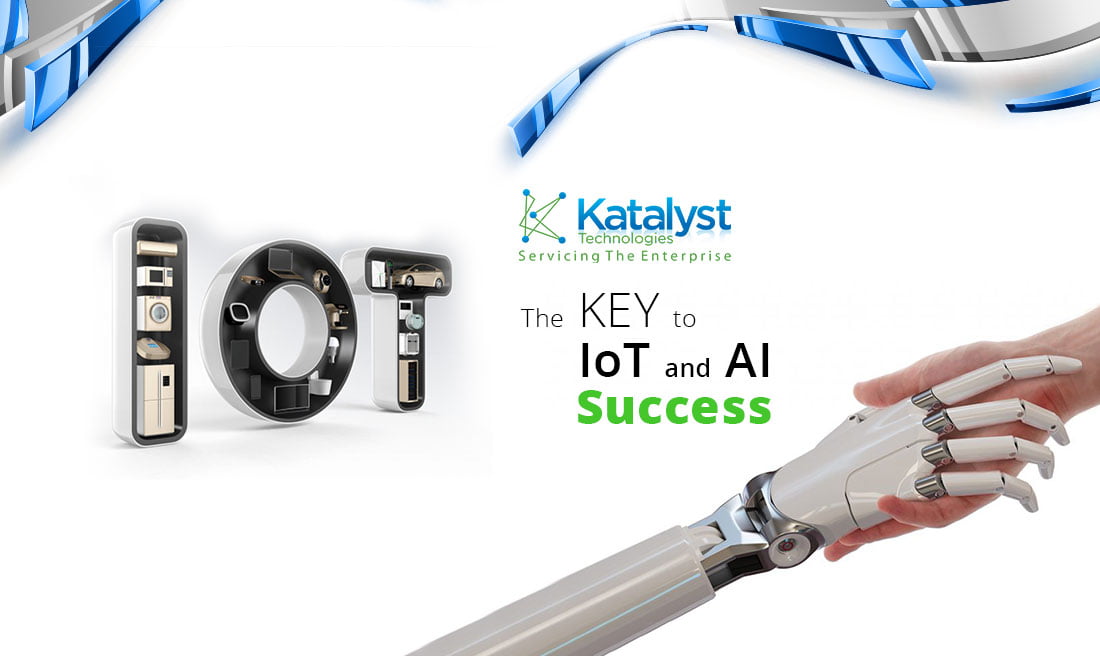
Used independently, the Artificial intelligence(AI) and Internet of things (IOT) are both extraordinarily helpful ways for companies to innovate. When combined, their symbiotic relationship can completely transform how businesses operate, allowing for significant cost savings and increased productivity. As companies find themselves overwhelmed with a seemingly infinite amount of IoT data, much of which is collected via AI, many are going full circle, turning to AI to interpret this information. As a result, they are coming up with new ways to meet customer needs and improve processes.
“AI provides insights that are outside the human-created brand guidelines, personas, or practices, and forces marketers to redefine their relationship with data with an abstracted layer from strategy to performance,” says RJ Talyor, Founder & CEO of Pattern89, which specializes in using AI in digital marketing. “AI can identify patterns and outliers invisible to the human eye in massive amounts of data, and then deliver that specific insight almost instantly.”
These patterns can account for both individual and large-scale user trends. When AI devices directly interact with customers, they provide companies with valuable information on how to meet their needs. AI also allows the opportunity to work with users on their own schedules, especially with the rise of automated chatbots and other services that provide immediate, reliable service at all times.
How to Start
While AI can facilitate more productive data usage, it’s important to remember that it is only as valuable as a company decides to make it. “The first step is to not chase the buzz [and] understand that attempting to integrate AI for AI’s sake can be a waste of resources and a source of frustration,” says Josiah Hester, Assistant Professor of Electrical and Computer Engineering at Northwestern University. “AI is not a cure-all or silver bullet; the more defined a problem is, with existing data and measurable outputs, the better the integration.”
When Amazon was looking to improve warehouse efficiency, it turned to AI. Kiva robots, which retrieve products in warehouses, have saved the company an estimated 20% since 2014, cutting order picking times by 75%. That allowed warehouse managers to find ways to make smarter use of space, and Amazon warehouses that utilize Kiva technology move about 50% more product than those that have yet to adopt the robots.
Hester says that the possibilities for bringing AI into the IoT are limitless. “With the rich set of sensing abilities in today’s IoT systems, other types of ultra-personalized shopping experiences might start showing up that react to a customer’s tastes, history, and even mood,” he says. As experts estimate over 25 billion Internet-connected “things” will exist by 2021, there will be an even greater opportunity to discover consumer habits.
Whether customers realize it or not, the IoT is assisting them on a daily basis, from parking garages displaying the number of open spaces to tracking the status of a pizza delivery. Of course, customers are also assisting companies by providing invaluable data through their IoT devices. The challenge arises in interpreting that immense amount of data. That’s where incorporating AI into the IoT becomes a necessity.
The Ethics of AI
It’s been over 60 years since Dartmouth professor John McCarthy predicted that any intelligent behavior could be communicated well enough that a machine would be able to replicate it. However, companies should approach AI as a partner, not a replacement for people. Combining human and computer intellect will always outweigh either individually.
Companies need to “create an AI ethics statement, which should be a living, breathing statement that is evaluated and iterated quarterly as our experience and real-world examples shape our understanding of best practices,” Talyor says. “AI calculates the problem and solution, but the human is best at applying judgment, ethics, and creativity to the solution. Humans also provide new thoughts, creativity, and imagination that AI can’t. The human marketer is essential as the creative input and the brand and ethical judge of the output.”
That said, Hester points out that “the vast majority of AI is in optimizing invisible processes that are opaque to the consumer.” In most instances, customers will likely appreciate the convenience and improved experience AI allows them.
Katalyst Can Help
If your business is looking towards building new solutions with Artificial intelligence and Internet of things, there’s no need to do it alone. The experts at Katalyst Software Services Limited are ready to help you implement these into your organization. Contact us to set up a consultation.

